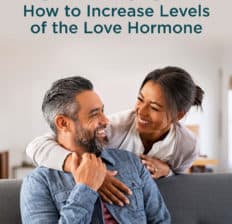This Dr. Axe content is medically reviewed or fact checked to ensure factually accurate information.
With strict editorial sourcing guidelines, we only link to academic research institutions, reputable media sites and, when research is available, medically peer-reviewed studies. Note that the numbers in parentheses (1, 2, etc.) are clickable links to these studies.
The information in our articles is NOT intended to replace a one-on-one relationship with a qualified health care professional and is not intended as medical advice.
This article is based on scientific evidence, written by experts and fact checked by our trained editorial staff. Note that the numbers in parentheses (1, 2, etc.) are clickable links to medically peer-reviewed studies.
Our team includes licensed nutritionists and dietitians, certified health education specialists, as well as certified strength and conditioning specialists, personal trainers and corrective exercise specialists. Our team aims to be not only thorough with its research, but also objective and unbiased.
The information in our articles is NOT intended to replace a one-on-one relationship with a qualified health care professional and is not intended as medical advice.
Oxytocin (The Love Hormone): Benefits + How to Increase Levels
February 9, 2025

Oxytocin, nicknamed by some experts “the tend and befriend hormone,” is one of the most important hormones that humans (and many other mammals) produce. It plays an important role in:
- social bonding
- building relationships
- reproduction
- childbirth
- breastfeeding
- raising children
Here’s something that may come as a surprise: According to the American Psychological Association, oxytocin is released in response to both positive social connection and stressful conditions.
Levels have been found to be higher when someone is under stress, such as when exposed to social isolation or when in an unhappy relationship. It’s thought that increased levels may help motivate people to reach out for help.
On the other hand, situations that make us feel safe, happy and connected tend to cause the release of several “feel-good hormones,” including oxytocin, dopamine and serotonin.
What is oxytocin?
Oxytocin is a hormone (technically a peptide or neuropeptide) that is involved in bonding. As a neuropeptide, it’s a “chemical messenger” that acts on organs, including the brain.
What does oxytocin do, and where is it produced?
Oxytocin is produced in the hypothalamus region in the brain, often called the “control center” of the brain. It’s also thought to be influenced by activation of the amygdala, which is the region of the brain mostly associated with fear and memories.
Once the hypothalamus sends signals for oxytocin to be produced, it’s either released into the bloodstream or to other parts of the brain and spinal cord. It binds to oxytocin receptors, influencing how we feel and behave toward others.
Oxytocin influences the autonomic nervous system and the immune system. This includes having an effect on the “hypothalamic-pituitary-adrenal axis” (also called the HPA axis), which dictates release of many hormones.
This peptide hormone has been said to have “broad implications” for general health, including facilitating adaptation to stressors, development, growth, healing, reproduction and social behavior. It also seems to have anti-inflammatory and even antioxidant effects, since it defends the body against trauma, illness and stress-induced damage.
Additionally, it helps keep blood pressure levels in the normal range and also balances cortisol levels, a primary “stress hormone.”
We usually think of it as a feminine hormone, but do men produce oxytocin too?
Yes. While it was originally considered a hormone that was only found in women due to its tie to labor, lactation and raising children, it’s now known to be present and important in both men and women (although women are still thought to produce more).
For example, oxytocin helps with male reproduction, as well as female reproduction, by supporting production of testosterone in the testes and motility of sperm. Additionally, it affects both sexes’ metabolisms, moods, immune systems and more.
How the love hormone affects emotions
Why is oxytocin called “the love drug”? It’s responsible for many aspects of social bonding and sexual pleasure and affects emotions.
Oxytocin also has similarities to endorphins (opiate chemicals) because we produce more in order to soothe ourselves in response to sources of pain and stress.
How does oxytocin make you feel? Here’s a basic overview of the emotional effects of oxytocin:
- Research has told us that oxytocin’s effects are basically the opposite of those linked to our “fight or flight” response. Higher levels are linked to feeling calmer and having a better capacity to deal with stress.
- Newer research has suggested that increased oxytocin can potentially also increase feelings of generosity, forgiveness, trustworthiness, joy and security.
- It seems to help increase fidelity and monogamy in relationships by keeping us honest and facilitating compassion/empathy toward others. Plus it increases feelings of protectiveness.
Benefits/uses
1. Helps with social bonding and building relationships
Can oxytocin make you fall in love? The release of oxytocin is associated with feelings of love and protection, as well as empathy, trust and connectedness.
Studies have shown that oxytocin enforces pro-social behaviors, attachment, bonding and even fidelity by rewarding those who maintain good relationships with positive, calm feelings of well-being.
One study demonstrated that people in the early stages of romantic attachment, within the first six months of a new relationship, had higher circulating levels of oxytocin. It’s also known that oxytocin levels are high during sexual activity and after orgasms.
Many forms of social contact seem to result in bursts of oxytocin, even if it’s anticipated social contact, such as planning for a date, party or get-together.
The hormone also works on a “positive feedback loop.” It makes us want to socialize, which further increases our oxytocin production, which then makes us feel good so we continue to seek out relationships with others.
2. Boosts ability to cope with stress
While it also works under times of low stress, oxytocin has been shown to be elevated under times of high stress, too.
Some studies have found that people who report having poor social relationships usually have higher circulating levels of both oxytocin and the stress hormone cortisol than those reporting better relationships.
Externally administering the hormone via supplements has been shown to help mitigate stress reactions, acting as a type of natural buffer. It can make people who are stressed seek out support through better social connections.
It may also help protect the nervous system from shutting down in the face of stressful circumstances, including childbirth.
By increasing someone’s motivation to find help from others, the hormone can help people find opportunities and engage in behaviors that lead to more security, joy and love.
3. Induces labor
What does oxytocin do in women to facilitate reproduction? Not only does it help women bond with their sexual partners or potentially the future fathers of their children, but oxytocin also strengthens labor contractions during childbirth, along with helping control bleeding after childbirth.
It facilitates production of prostaglandins, which are chemicals that move labor along by increasing contractions.
In prescription/synthetic form, it can be used to induce labor or speed up the process. The most widely used form is the brand-name drug Pitocin, which is commonly given to women in the hospital during labor.
4. Supports breastfeeding and child rearing
According to a 2018 study focused on human evolution, some of oxytocin’s main functions are to support breastfeeding and nurturing maternal behaviors among both mothers and fathers.
Research has linked the hormone to a mother’s ability to care for her infant in multiple ways, one of which is through breastfeeding. When a baby nurses from his/her mother’s breast, nerves in the nipple send a signal to the pituitary gland to produce oxytocin, which then causes tiny muscles around the nipple to squeeze and release milk.
Experts also believe that oxytocin helps new mothers and fathers feel calm even during difficult life transitions, one of which is having and caring for a new baby. Levels have been shown to rise in parents due to affectionate touch and contact with their babies and children.
5. May have anti-aging and anti-obesity effects
In one study, it was shown that higher oxytocin release is linked with protection against accelerated signs of aging and better regeneration of aged tissue stem cells, including muscle cells.
Oxytocin injections may be used in the future to help injuries heal better, improve bone health and possibly prevent obesity.
For example, some animal studies have found that oxytocin administration leads to sustained weight reduction by reducing food intake, which is believed to happen because it dampens the brain’s food-related reward circuitry.
Additionally, it seems to reduce muscle and joint pain due to pain-dulling and anti-inflammatory effects. Higher circulating levels are also thought to be positively associated with lean mass and bone mineral density.
6. May help with social disorders
Oxytocin has been investigated for its potential therapeutic effects on various psychiatric conditions characterized by social deficits and anxiety, including social phobia, autism spectrum disorders and postpartum depression.
Research has suggested that oxytocin may modulate social behaviors and reduce anxiety, making it a promising candidate for treating social phobia. A review of clinical trials indicated that oxytocin administration could have beneficial effects across several conditions, including social anxiety.
Oxytocin’s role in enhancing social cognition has led to studies exploring its application in autism as well. A meta-analysis of clinical trials found that oxytocin administration showed a significant combined effect in improving social behaviors in individuals with autism.
The involvement of oxytocin in mood regulation and maternal behaviors has prompted investigations into its potential therapeutic effects on postpartum depression. Oxytocin is considered a promising neuromodulator for psychotherapeutic interventions in various psychiatric illnesses, including postpartum depression.
While these findings are encouraging, it’s important to note that research is ongoing, and the therapeutic use of oxytocin for these conditions is still under investigation. Further studies are needed to fully understand its efficacy and safety profiles in these contexts.
How to increase it
Both higher- and lower-than-normal levels of oxytocin can cause health problems and changes in behavior among women and men, according to endocrinologists. Here are some examples of how:
- High levels among men may contribute to enlargement of the prostate gland (benign prostatic hyperplasia) and urinary problems.
- Low levels (what some might call “oxytocin deficiency”) among women can interfere with child labor and breastfeeding.
- Low levels among both sexes have been linked to depression and anxiety, although it still isn’t totally clear how administering oxytocin supplements can help treat these and other mental health conditions.
- It’s also believed that low levels may be tied to autism and autistic spectrum disorders.
Wondering, “How can I increase my oxytocin levels?” Is there a supplement for oxytocin or foods that can naturally boost production?
Here are ways that you can naturally boost your production in order to promote feelings of well-being and connectedness:
- Physical contact. Hugs, massages, being intimate, shaking hands and breastfeeding all cause the release of oxytocin. Physical contact can increase levels whether it’s between lovers, friends, or children and their parents.
- Essential oils. Research has shown that certain essential oils, including clary sage oil, may help balance hormones and encourage production of “the love hormone.”
- Making eye contact
- Laughing
- Giving and receiving gifts (including money)
- Altruistic behaviors, such as cooking for others and sharing meals together
- Petting a dog, cat or other pet
- Doing “loving kindness” meditations or visualization
- Telling someone you love him or her
- Listening to calming music
- Speaking to someone you trust on the phone
- Walking or exercising with someone
- Looking at photos or videos of people you care about, including via social media
Supplements, sprays and dosage
What happens if you take oxytocin in supplement or spray form? Although more research is still needed to confirm how oxytocin supplements and sprays affect our behaviors and moods, researchers think there’s a possibility that administering this hormone may help people dealing with social and emotional problems.
Conditions that oxytocin may be able to help include:
- autism or Asperger’s disorder
- social anxiety
- schizophrenia
- depression
Some early experiments have suggested that oxytocin nasal sprays or injections may help people with these conditions better identify emotional content and facilitate social information processing.
The synthetic version of oxytocin given intravenously (Pitocin) is also used to induce labor.
Can oxytocin be taken orally?
At this time there isn’t an oral supplement of this hormone available. Because it’s destroyed in the gastrointestinal tract, it’s given by injection or nasal spray instead.
Dosage of oxytocin depends on why it’s being given and someone’s response; therefore it must be individualized. When it’s given to induce labor, IV infusion is used along with frequent monitoring.
Infusion doses starting at 0.5 to 1 milliunits/minute, in some cases increasing up to 6 milliunits/minute, are typically given to women during labor.
Does food have oxytocin?
This hormone is not found in foods, but it does play a role in regulating appetite. Eating aphrodisiac foods (such as chocolate, coffee, fish, avocado and some herbs) may also improve your mood and desire for connection, leading to higher release.
Risks and side effects
Are there any oxytocin supplement side effects to be aware of?
Overall it isn’t entirely known how effective these supplements may be when used long term. Researchers are still working to determine how this hormone impacts people differently depending on factors like genetics and underlying psychiatric disorders.
There’s some evidence that administering supplements to increase oxytocin levels may wind up having side effects like increased prejudice, envy and dishonesty among some users, although it seems to depend on the individual.
Pitocin can also lead to side effects, including increased pain, digestive issues like nausea or vomiting, and others.
Frequently asked questions
How are oxytocin levels controlled?
Oxytocin levels are primarily regulated by the hypothalamus, which produces oxytocin and stores it in the posterior pituitary gland for release into the bloodstream. The secretion of oxytocin is controlled by positive feedback mechanisms, meaning that its release stimulates further production in response to specific stimuli (e.g., childbirth, breastfeeding, social bonding).
Various factors, including stress, hormonal changes and social interactions, influence levels.
What happens when oxytocin levels are low?
Low levels can lead to:
- Reduced social bonding and trust (may contribute to social anxiety and autism spectrum disorders)
- Increased stress and anxiety
- Postpartum depression risk
- Difficulty with emotional connections
- Challenges in breastfeeding (since it helps with milk letdown)
- Decreased sexual satisfaction
What happens when oxytocin levels are high?
Elevated levels are generally associated with positive social behaviors and emotional well-being, but excessive oxytocin can have drawbacks, such as:
- Increased emotional sensitivity (overattachment, jealousy or favoritism)
- Potential for group bias (stronger in-group connections but more negative views toward outsiders)
- Lower pain perception (which can sometimes lead to risk-taking behavior)
- In rare cases, uterine contractions and complications during pregnancy
Why is oxytocin called the love drug?
It is often referred to as the “love hormone” or “cuddle hormone” because of its role in:
- Bonding and attachment (strengthens relationships between partners, parents and children, and social groups)
- Romantic and sexual connections (released during intimacy and orgasm)
- Trust and emotional connection (increases feelings of empathy and security)
- Physical touch and affection (hugs, kisses and cuddling trigger oxytocin release)
What triggers oxytocin release?
Oxytocin release is stimulated by:
- Physical touch (hugs, cuddling, massages and sex)
- Social bonding (spending time with loved ones, emotional support)
- Childbirth and breastfeeding (promotes labor contractions and milk ejection)
- Eye contact and verbal affection (expressing love and care)
- Acts of kindness and trust (helping others, social cooperation)
- Music and meditation (singing, dancing or deep relaxation)
Conclusion
- Oxytocin is a hormone that acts as a chemical messenger in the brain and other organs.
- Why is oxytocin called the love hormone? It plays an important role in bonding, generosity, trust, loyalty and sexual arousal.
- Not only do women produce this hormone to facilitate bonding, birth and breastfeeding, but it is produced by men too. It helps with sperm quality and reproduction in both sexes.
- How does it make you feel? It has calming properties and builds resilience against stress. It can also help support fidelity and monogamy, empathy, and connection with an infant.
- Oxytocin supplements are still being researched for their potential benefits in helping people with depression, anxiety, autism disorders and other mental health concerns.
- Here’s how to increase oxytocin naturally: Make physical contact with others, share and receive gifts, get a massage, have meaningful conversations, be intimate, and basically do anything enjoyable that involves socializing, sharing and touch.







